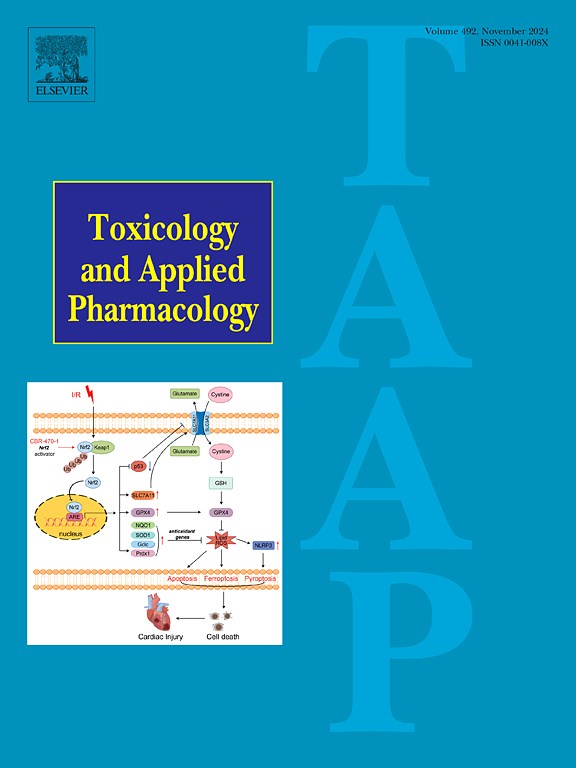Application of cytochrome P450 enzyme assays to predict p53 inducers and AChE inhibitors that require metabolic activation
IF 3.3
3区 医学
Q2 PHARMACOLOGY & PHARMACY
引用次数: 0
Abstract
Metabolically active compounds can cause toxicity which would otherwise be undetected using traditional in vitro assays with limited proficiency for xenobiotic metabolism. Introduction of liver microsomes to assay systems enables enhanced identification of compounds that require biotransformation to induce toxicity. Previously, metabolically active compounds from the Tox21 10 K compound library were identified using assays probing two targets, p53 and acetylcholinesterase (AChE), in the presence and absence of human or rat liver microsomes, due to the established roles of cytochrome P450 (CYP) enzymes in human drug metabolism. To further explore the role of metabolic activation, the activities of the identified metabolically active compounds were evaluated against five CYP enzymes: CYP1A2, CYP2C9, CYP2C19, CYP2D6, and CYP3A4. CYP bioactivities were found to be highly predictive (>80 % accuracy) of compounds that required metabolic activation in these assays. Chemical features significantly enriched in metabolically active compounds, as well as chemical features that were specific for each of the five CYPs, were identified. Product use exposures of the metabolically active compounds were examined in this study, with “pesticides” appearing to be the largest category that may produce harmful metabolites. Additionally, the compound interactions with different CYPs were assessed and frequencies for both classes of compounds, drugs and environmental chemicals, were found to be proportionally similar across the five CYP isoforms.
求助全文
约1分钟内获得全文
求助全文
来源期刊
CiteScore
6.80
自引率
2.60%
发文量
309
审稿时长
32 days
期刊介绍:
Toxicology and Applied Pharmacology publishes original scientific research of relevance to animals or humans pertaining to the action of chemicals, drugs, or chemically-defined natural products.
Regular articles address mechanistic approaches to physiological, pharmacologic, biochemical, cellular, or molecular understanding of toxicologic/pathologic lesions and to methods used to describe these responses. Safety Science articles address outstanding state-of-the-art preclinical and human translational characterization of drug and chemical safety employing cutting-edge science. Highly significant Regulatory Safety Science articles will also be considered in this category. Papers concerned with alternatives to the use of experimental animals are encouraged.
Short articles report on high impact studies of broad interest to readers of TAAP that would benefit from rapid publication. These articles should contain no more than a combined total of four figures and tables. Authors should include in their cover letter the justification for consideration of their manuscript as a short article.

 求助内容:
求助内容: 应助结果提醒方式:
应助结果提醒方式:


